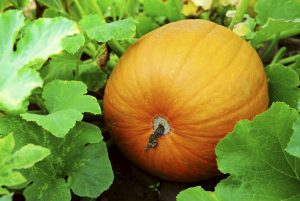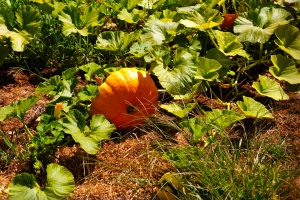How to Grow Pumpkins
Pumpkins are nutrient rich vegetables that also make for excellent Jack O’Lanterns every Halloween. As long as you have the right amount of space and access to nutrient rich soil, growing pumpkins should be fairly easy. Here are some of the guidelines to growing delicious, good-sized vegetables:
Planting the Pumpkin Seeds

Pumpkins require an extended growing season. This means that they need at least seventy five to a hundred days without any frost. Therefore, you will need to plant the seeds during late spring or early summer. If the soil is not warm enough, there is a chance that your pumpkins will rot.
Pumpkins grow best when they are planted directly into the soil. If you want to start growing the seeds during early spring, you can grow them in pots for a short period of time. Make sure to harden the plants before transplanting them into your garden.
When choosing a plot, make sure to choose one that is in full view of the sunshine. Also, because pumpkins require a lot of food, you should only plant it in rich soil that has been mixed with compost and manure. The soil also needs to be well drained.
You can plant the seeds either in rows or in ‘pumpkin hills’ which are actually small mounds. The benefit of planting in hills is that the soil is warmer and the plants will germinate faster. If you are planting in mounds, you can plant several seeds in one mound. Make sure that the mounds are at least four feet apart. For rows, keep a distance of at least six feet between the seeds.
Always plant the seeds in temperatures between 70°F and 95°F.
Maintaining Pumpkin Plants
There are two things that you need to remember with pumpkin plants. The first is that the soil needs to be fertilized quite regularly. When the plants are quite young use a fertilizer that is rich in nitrogen. When they are blooming, use one high in phosphorus instead. You should also remember to use plenty of compost and manure as well.

The other thing that you will need to do is to water them well, especially when the fruit begins to emerge. Watering about one inch a week should suffice. However, avoid wetting the leaves, vines, or the vegetable as this could cause rotting.
Pumpkins are quite delicate. Therefore, to discourage weeds place mulch on the soil. This is better than rooting around in the soil later on. Once some pumpkins have grown, you should trim and limit vine growth. This helps the plants to focus on the existing vegetables.
Harvesting Pumpkins
The harvest time for pumpkins can’t really be determined by size. Instead, it is time to harvest them when the skin has turned a dark and deep color. Toughened rinds are another way to test whether the vegetables are ripe enough.
When removing the pumpkins from the plants, you will need to be gentle. Also, make sure to cut the pumpkin off the vine. By leaving several inches of vine still attached to the vegetable, it will remain fresher for longer.
This is what you need to know about growing your very own pumpkins. If you want to know more, check out The Perfect Pumpkin: Growing, Cooking, Carving.
